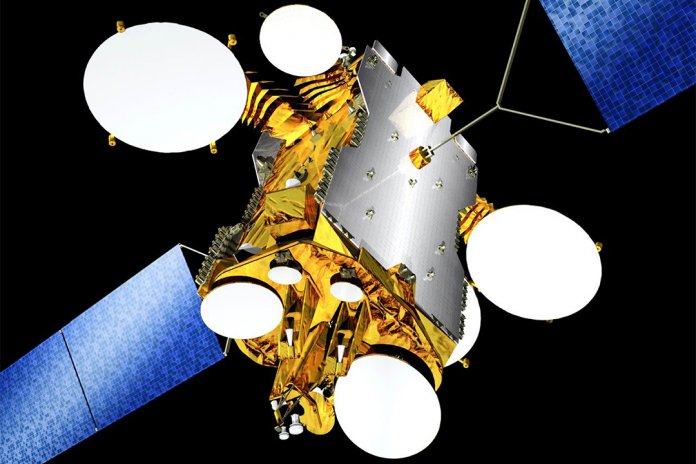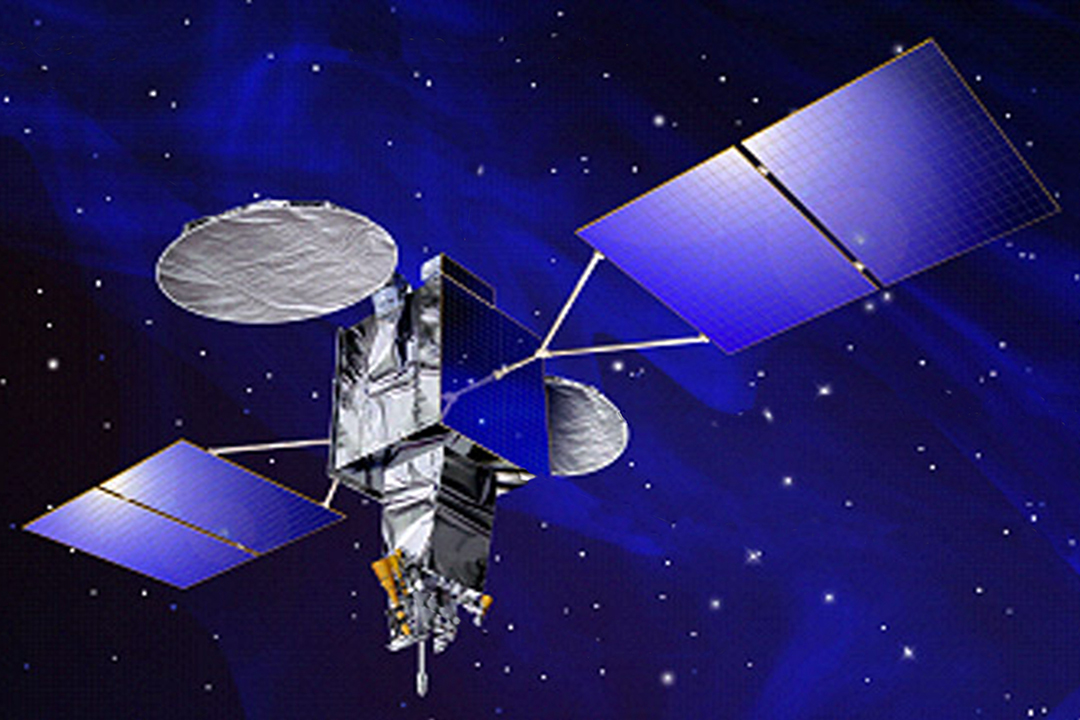
Published in the September 2020 Issue – Unravelling the mystery of the US PAN-1 signals intelligence collection satellite, and UCAV strikes in Yemen.
Like any good covert operator the spacecraft has several monikers; USA-207, P360 and PAN, with the last being the most enigmatic, an acronym for Palladium at Night. PAN-1, as the satellite will henceforth be called, zoomed into the heavens atop a United Launch Alliance Atlas-V rocket launched from Cape Canaveral, Florida on 8 September 2009.
PAN-1 uses Lockheed Martin’s A-2100 communications satellite bus. The satellite is in a geostationary orbit where it moves at the same speed as the Earth, around 863 knots (1,600 kilometres per hour). This allows the satellite to loiter over the same area of interest. Initially PAN-1 entered a geostationary orbit over Africa. Satellite watchers noted that the craft was positioned between the meridians of 33 degrees east and 53 degrees east; a position that would cover nearly all the Arabian peninsula and a wide swathe of east Africa, including trouble-spots like Somalia, and the western Indian Ocean. It would be an understatement to say that such areas were of interest to the US intelligence community. Yet the mission of PAN-1 appeared to be slightly more nuanced than simply hovering above some of the world’s war zones and listening to the spectrum for the communications traffic from High Value Individuals (HVIs), Pentagon-speak for bad guys. Instead, it appears that the PAN-1 was to hoover up so-called FORNSAT (Foreign Satellite) communications traffic not from Earth but from other satellites, according to redacted documents freely available relating to communications intelligence sharing between the ‘Five Eyes’ partners of Australia, Canada, New Zealand, the United Kingdom and the United States.

The logic behind PAN-1’s mission was fiendishly simple: develop a spacecraft which can be moved in close proximity to a standard commercial communications satellite and, for all intents and purposes, ‘overhear’ the traffic that they are receiving. Although redacted, the documents noted that the capability in question, assumed to be the PAN-1, would be tasked with “targeting commercial satellite uplinks not normally accessible via conventional means.” PAN-1 was launched with a finite amount of fuel onboard allowing the satellite to be moved throughout its service life, with enough spare fuel for it to eventually be positioned in a ‘graveyard orbit’ at the end of its mission well beyond the orbital thoroughfares routinely used by operational spacecraft.
The satellite may have been designed to exploit a simple law of electro-magnetics: as a beam is transmitted it widens from its point of origin in a cone-like pattern, like the light flowing from a torch. As a result, a spacecraft like PAN-1 can be moved into the vicinity of another satellite and exploit this phenomenon. By being near the intended satellites, its antennas will be able to receive satellite communications traffic from Earth. Publicly available sources have presented diagrams of the PAN-1 satellite which show its C-band, Ku-band and Ka-band horn antennas capable of collecting COMINT transmitted across the C-band frequencies reserved by the International Telecommunications Union for SATCOM, chiefly the 5.925-6.425GHz uplink/3.7-4.2GHz downlink (C-band), 14GHz uplink/10.9-12.75GHz downlink (Ku-band) and Ka-band (26.5-40GHz uplink/18-20GHz downlink) wavebands.
Keeping track of these bands has meant that PAN-1 has had its work cut out. There is a myriad of spacecraft that carry communications across these frequencies, and since its launch PAN-1 has shown some significant interest in a variety of these satellites. Amateur satellite trackers have kept a detailed log of PAN-1’s behaviour. For example, in May 2016, the satellite was discovered in the neighbourhood of the United Arab Emirates’ Airbus/Thales Alenia Yahsat-1B/Al Yah-2 communications satellite. This handles Ka-band and Ku-band commercial and military SATCOM traffic. Was PAN-1 collecting COMINT on traffic moving across Yahsat-1B/Al Yah-2? Likewise, the satellite was in close proximity with the Paksat-1 and Hellas Sat-2 birds in November 2010. The Boeing PakSat-1/Pashto-1 was launched in 1998 and leased to the Space and Upper Atmosphere Research Commission, Pakistan’s national space agency. Open sources state that the satellite provides C-band and Ku-band communications over the Middle East and Central Asia, and parts of South Asia and Europe. Hellas Sat-2 was built by EADS Astrium/Airbus and launched in May 2013 providing Ku-band coverage across North Africa, the Middle East and much of Europe. Given the coverage that both satellites provided over the Middle East, Central Asia, North Africa and South Asia one can see why the US intelligence community was keen to listen to the traffic flowing across these and other satellites vis-à-vis ongoing US-led counter-insurgency operations following the September 2001 attacks on Washington DC and New York.
Targeted Assassinations
There is an interesting potential correlation between the frequency of attacks performed by US Air Force (USAF) and US Central Intelligence Agency (CIA) Unmanned Combat Aerial Vehicles (UCAV) and conventional airstrikes against targets in Yemen since the PAN-1’s launch in 2009. Publicly available figures note that USAF and CIA UCAV attacks, most probably using General Atomics MQ-9A Reaper/Predator-B aircraft, increased in frequency between 2010 (one recorded attack) to 2012 (50 recorded attacks). Between 2013 and 2019 there was an average of 14 attacks annually.

How might the PAN-1 be connected to these attacks? Standard interceptions of satellite traffic using ground-based antennas available to the Five Eyes intelligence sharing members may reveal that HVIs such as a known insurgent is using a particular satellite or satellite network to communicate. This will most likely be a spacecraft that they can reach in a line-of-sight range from their location, in this case, somewhere in Yemen. With the satellite network and spacecraft identified, the PAN-1 can be moved within proximity of this satellite so that the former can start collecting COMINT regarding the HVI’s transmissions. Importantly, this will allow the satellite to determine the source of these transmissions and hence the possible location of the individual. Such intelligence may provide sufficient detail to determine their location to within a kilometre or so.
Nonetheless, to successfully prosecute what will be a small target, at worst the size of an individual, at best the size of a single vehicle in which they travel, will require a higher level of precision. Traditionally, at least three satellites have been needed to determine the position of an emitter using the Time Difference of Arrival (TDOA) technique. Given that radio signals travel at the speed of light, 161,595 knots-per-second (299,274 kilometres-per-second), by calculating the microscopic difference in time that it takes the same signal to reach each of these spacecraft one can determine the location of an emitter, and hence possibly the person using that device. Recent innovations have shown that this process can be performed with a single satellite; Horizon Technologies’ space-based version of its FlyingFish communications intelligence payload being a case in point. It is possible that the PAN-1 may use similar technology to avoid needing more than one satellite to determine an HVI’s location.
With the HVI’s location determined other platforms like the US Air Force’s Boeing RC-135V/W Rivet Joint signals intelligence aircraft can be brought into play. The underside of these jets is festooned with very/ultra high frequency blade antennas enabling the plane’s Raytheon Multiple Communications Emitter Location System to determine the position of the HVI with high precision using their SATCOM communications. Equally, other US or allied airborne COMINT gathering assets like the Royal Saudi Air Force’s Boeing RE-3A jets are believed to have a similar configuration to the RC-135V/W and could play a similar role. It will then be a matter of tracking the HVI visually as well as electronically either via satellites, inhabited platforms or unmanned aerial vehicles to wait for the optimum moment to strike.
Epilogue
What is PAN-1 up to now? Open sources state that the satellite does not appear to have moved from its current position since 2016. At the same time, the spacecraft has not been placed in a graveyard orbit. This seems to indicate that the satellite could be reactivated at a later date should the need arise. Other questions remain. The US National Reconnaissance Agency owns and operates one of the largest SIGINT satellite networks in the world in the guise of its Advanced Orion/Mentor satellites of which seven were launched between May 1995 and June 2016. There is little information about these satellites in the public domain, although it is thought that they are primarily concerned with civilian and military communications intelligence gathering across wavebands of 30MHz to three gigahertz. It is noteworthy that the USA-202/Mentor-4 member of the constellation has been used to collect SATCOM traffic moving across the Thuraya network from Afghanistan and Pakistan after being positioned in close proximity to the Thuraya-2 satellite in 2009 where it remained until 2013. Thuraya’s frequencies of 1.525GHz to 1.661GHz would fall squarely within the Advanced Orion/Mentor’s remit.
If the Advanced Orion/Mentor satellites can eavesdrop on SATCOM traffic why develop the PAN-1 spacecraft? Is it possible that the PAN-1 was needed to plug holes in the COMINT collection gaps the Advanced Orion/Mentor satellites could not cover either because they lacked the necessary payloads, because they were too busy with other tasks or because it would cost too much fuel to move existing Advanced Orion/Mentor satellites to be within eavesdropping distance of the satellites of interest to the US intelligence community. This, like much of the PAN-1 programme, remains shrouded in mystery. We may see declassified documents relating to its mission in the future which may answer some, or all, of these questions. For now PAN-1 seems to be keeping quiet.












